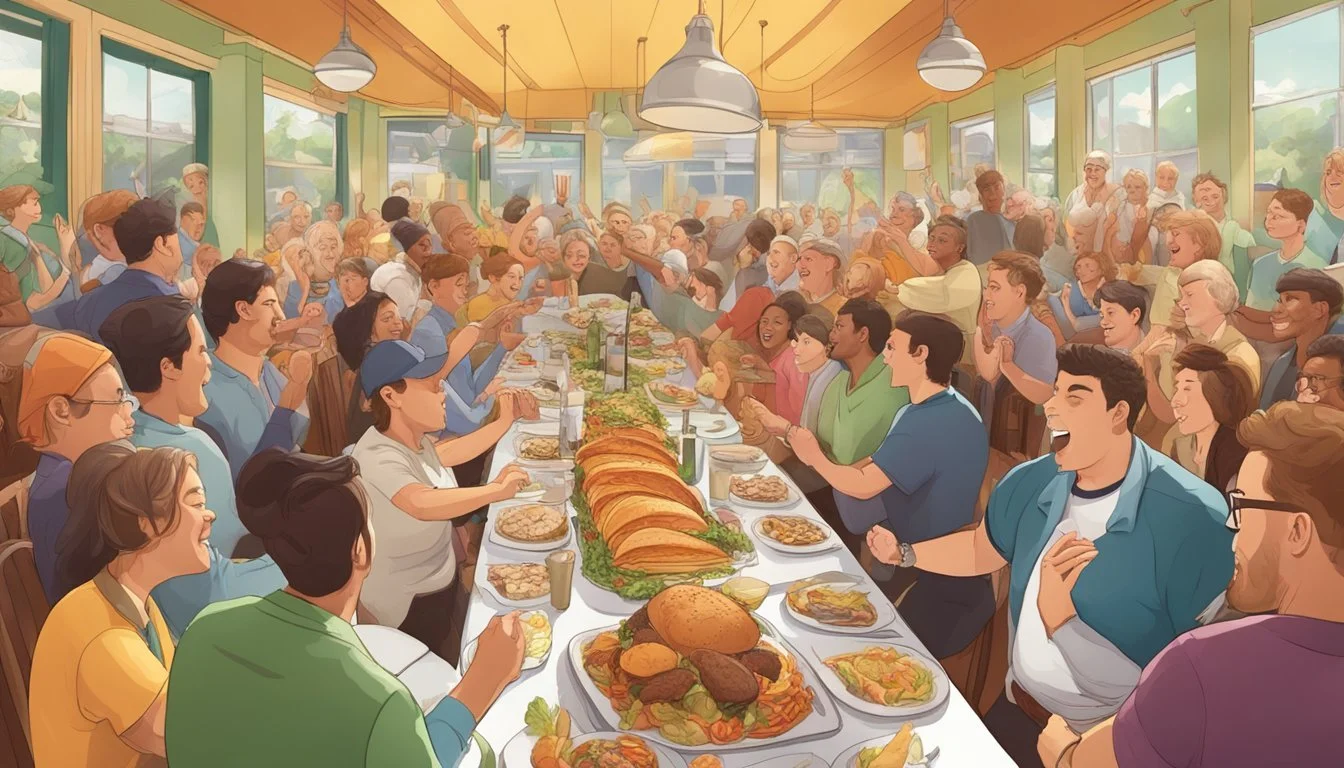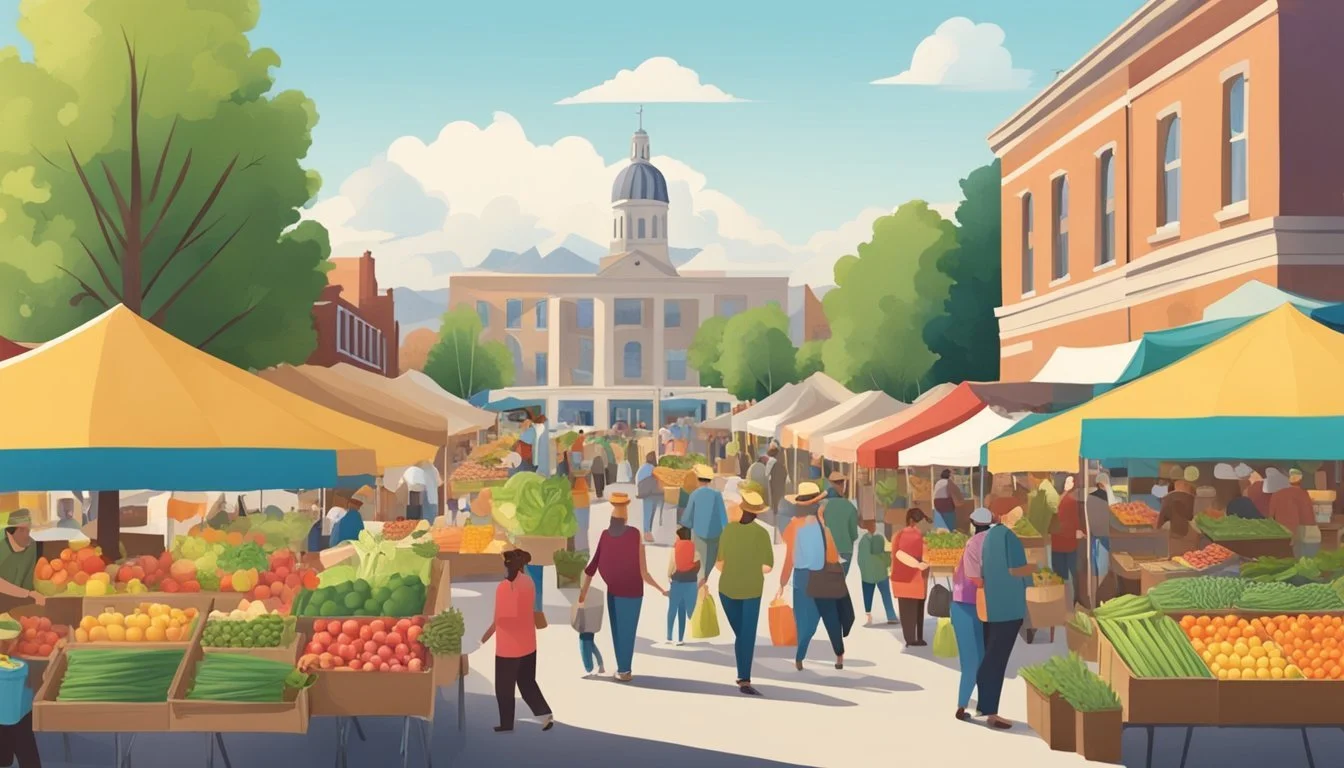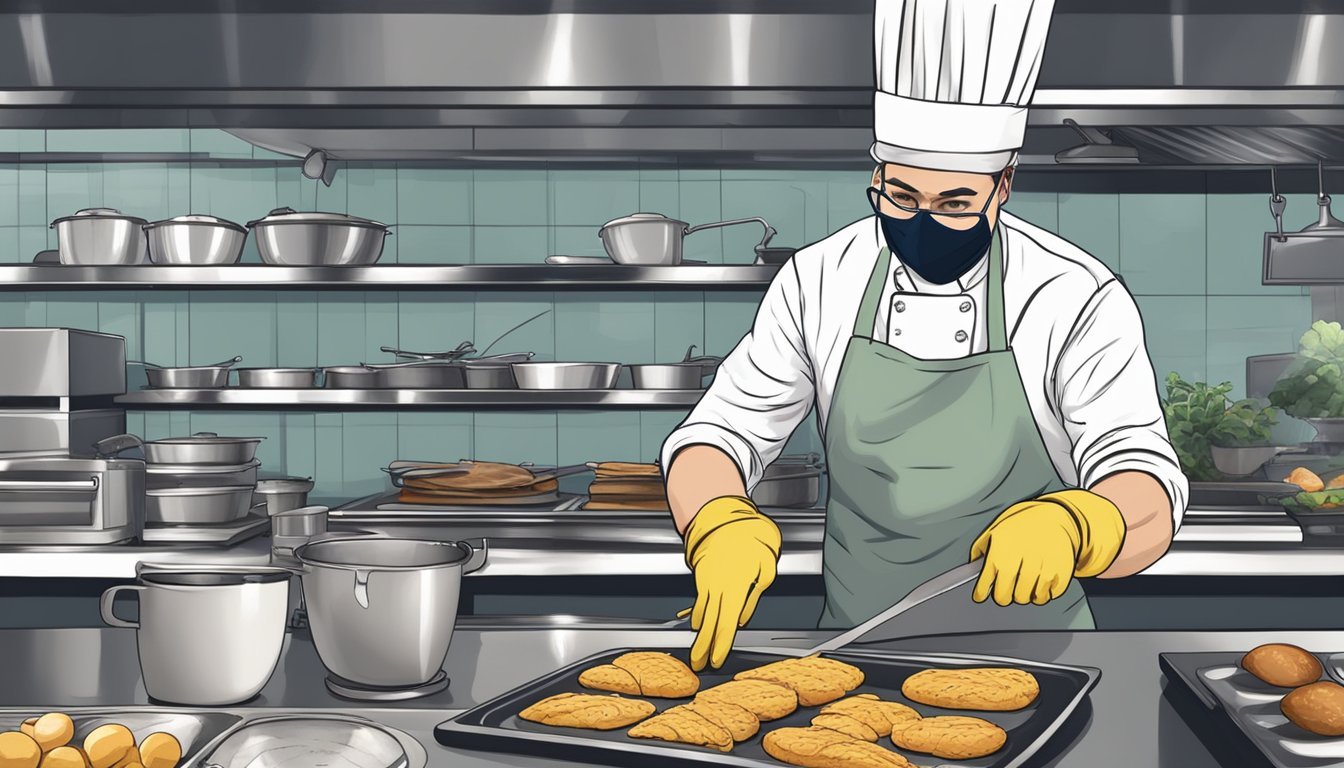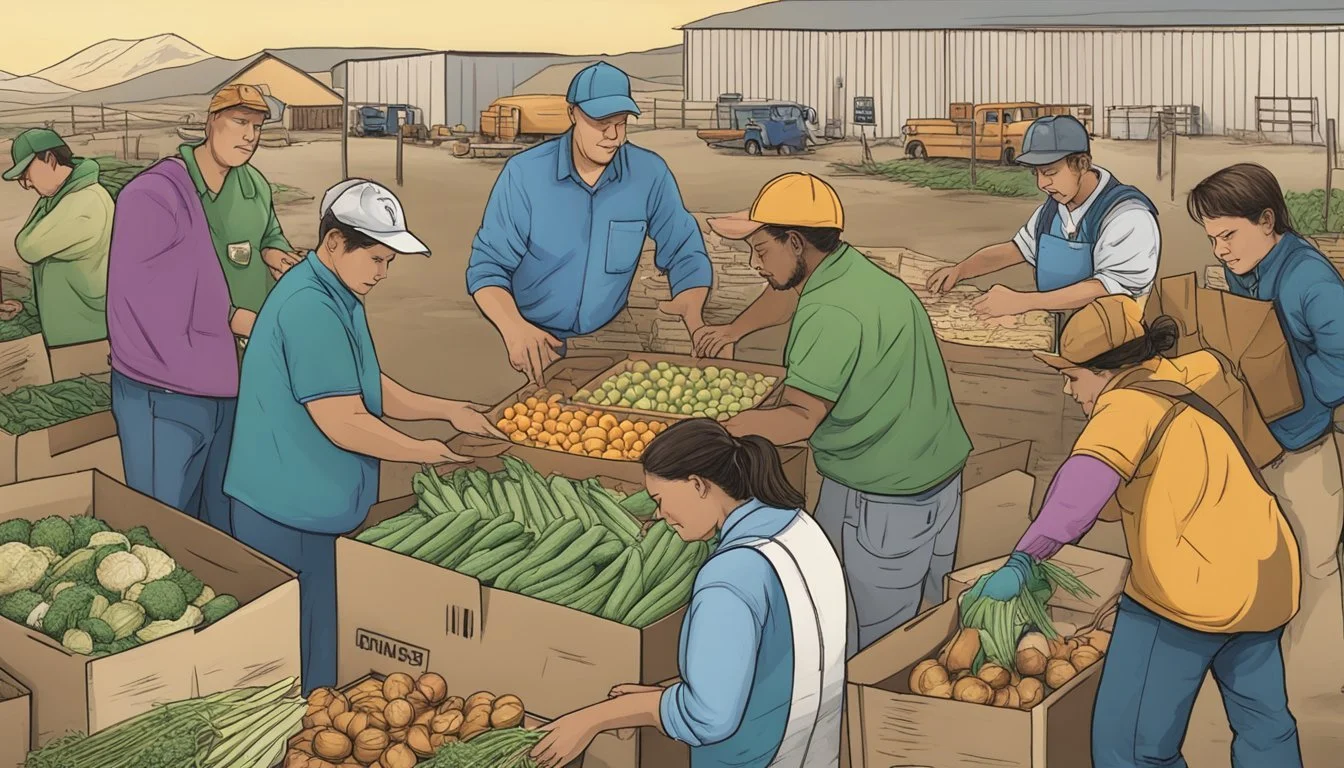Montana Food Challenges
A Guide to the State's Epic Eating Contests
Montana is not only renowned for its breathtaking landscapes and rich cultural history but also for its adventurous culinary scene. Food challenges in Montana cater to those with a hearty appetite and a competitive spirit, offering a diverse range of gastronomic quests. From consuming massive steaks to tackling towering burger stacks, these challenges are a testament to the state's love for both food and competition. Establishments across Montana have turned mealtime into a sport, luring both locals and tourists eager to test their limits and potentially earn a spot on the wall of fame.
The contrasts within Montana's food challenges mirror the state's own extremes, from its serene valleys to the rugged peaks. They range from the Bratwurst Eating Contest in Missoula to the 78oz Steak Challenge in Billings, where participants face off with a 78 oz ribeye steak (What wine goes well with ribeye steak?) alongside a hearty serving of sides. Yet, it's not only about sheer size; there's also creativity in the mix, such as unique contests that involve eating pretzels on a string. These events often serve as local festivities, bringing communities together and creating memorable experiences.
History of Montana Food Challenges
Montana's food system has faced numerous hurdles, shaped by its geography, climate, and economic pressures. Understanding the origins and evolution of these challenges provides insight into the state's current agricultural and food security landscape.
Origins of Challenges
In Montana, the origins of food challenges stem from its rugged terrain and harsh climate conditions, which pose significant obstacles to long-term food production. The state's vast size and sparse population have historically made distribution and accessibility problematic. These geographic hindrances, coupled with economic factors such as stagnant wages and rising inequality, have consistently affected food system viability. For example, the Montana Food Self-Reliance report discusses risks to food production and food business viability due to these compounding issues.
Famous Challenges Over the Years
Over the years, Montana has faced a series of notable food challenges. One significant battle has been against food insecurity, which was highlighted in a PDF report titled Hungry in Montana. This document revealed the complex and multiple challenges faced by those struggling with hunger, especially during particular times such as winter months and school vacations. Additionally, historical policy-driven problems, as noted by Grow Montana, have included a push for changes in state policies to reinforce the food and agricultural economies. These significant events over the years underline the continuous efforts required to endure and overcome food-related adversity.
Types of Food Challenges
Montana boasts a variety of food challenges that cater to different tastes and skill sets, from those who can handle intense heat to others who have a large appetite or can eat at lightning speeds.
Spicy Challenges
Montana's Spicy Challenges often push participants to their limits with some of the hottest peppers and sauces. For instance, one may find contests that feature a platter of wings doused in a fiery sauce that challengers must finish to earn the title of the spice king or queen.
Quantity Challenges
Quantity Challenges in Montana involve consuming large amounts of food. A prime example is the Bull Mountain Grille's 78oz Steak Challenge, where participants tackle a hefty ribeye steak alongside sides like mashed potatoes and rolls. These challenges test both the capacity and the endurance of the competitors.
Speed Eating Challenges
Speed Eating Challenges test how fast one can consume a given amount or type of food. Typical events might include eating a dozen bratwursts or a string of pretzels at a rapid pace. For example, Montana has featured the Pretzel on a String Eating Contest at Oktoberfest, challenging participants to devour pretzels faster than their opponents. These contests require quick chewing and swallowing, pushing the participants' ability to maintain quality eating techniques under time pressure.
Preparation for a Food Challenge
Embarking on a food challenge requires meticulous preparation in order to increase the chances of success. Both diet and nutrition, as well as specific training techniques, play pivotal roles in equipping participants for the gastronomic feats ahead.
Diet and Nutrition
Proper diet and nutrition are essential in the days leading up to a food challenge. For instance, participants should focus on consuming foods that are high in fiber to enhance digestive efficiency. It is suggested to have a 'max out meal' 18 to 22 hours before the event to expand stomach capacity without impacting performance.
Foods to Focus On: High-fiber vegetables, lean proteins, and complex carbohydrates.
Hydration: Adequate water intake is critical but should be reduced closer to the competition to avoid feeling bloated.
For a comprehensive guide on pre-competition nutrition, the resource at FoodChallenges.com provides valuable insights.
Training Techniques
Training for a food challenge involves more than expanding stomach capacity. Competitors must also finesse their speed eating skills and master the art of strategic food consumption.
Stomach Expansion: Safe, gradual increases in food intake during training sessions help.
Technique Refinement: Practicing with foods similar to those in the challenge can improve speed and efficiency.
Participants often gather together in community settings to share strategies and training methods, fostering a supportive environment. To understand the intricacies of training regimes, interested readers can refer to detailed strategies at FoodChallenges.com.
Popular Montana Food Challenge Locations
Montana is known for its adventurous spirit, which extends to its culinary challenges. Two standout locations offer feats of strength and stamina for food enthusiasts.
Bull Mountain Grille's Beast Burger
In Billings, MT, the Bull Mountain Grille presents a formidable challenge with the Beast Burger. This culinary giant is a test of both speed and capacity, attracting the bravest of the brave.
The Big Sky Steakout
While there isn't available data in the search results pertaining to a food challenge named "The Big Sky Steakout", the aforementioned Bull Mountain Grille also hosts a 78 oz Ribeye challenge which can be considered one of the most significant steak challenges in Montana. Participants are tasked with devouring a massive 78 oz Ribeye steak, an endeavor that's not for the faint of heart.
Impact of Food Challenges on Local Culture
Food challenges in Montana not only promote the consumption of local produce but also significantly influence the local culture by fostering community engagement and celebrating the state's culinary traditions.
Community Involvement and Events
Food challenges act as a catalyst for community involvement by encouraging participation in events that support the growth and sustainability of local food markets. The Montana Local Food Challenge by the Northern Plains Resource Council is an example of such an event, inviting Montanans to eat local food every day and participate in weekly challenges, thereby bolstering community spirit around local cuisine and producers.
Community Engagement: These challenges often translate into increased community support for farmers markets and CSAs (Community Supported Agriculture).
Economic Support: They reinforce economic structures that allow for $40 million in direct-to-consumer local food sales, illustrating the challenges' role in strengthening local economies.
Challenges Celebrating Local Cuisine
When it comes to celebrating local cuisine, food challenges have a dual role: they highlight Montana's distinct culinary offerings and foster an appreciation for farm-to-table dining experiences. Celebratory challenges, such as those included in Grow Montana's initiative highlighting the economic value of local food, underscore the significance of local fare in Montana's culture.
Promoting Local Specialties: Events are designed to integrate local ingredients into mainstream dining, thereby spotlighting local food production that supports over 1,100 jobs in Montana.
Educational Value: These challenges serve as educational platforms that inform the public about the depth and variety inherent in Montana's agriculture and culinary landscapes.
Supporting Local Agriculture Through Challenges
Montana's local food challenges are not just about enjoying the state's bounty; they actively support and sustain the local agriculture economy. These challenges encourage consumers to connect with the food's origin, benefitting both the local farmers and the wider community.
Farm-to-Table Challenges
Eat Local Every Day: Initiatives like the Montana Local Food Challenge invite individuals to eat locally-sourced food every day. Participants are provided resources to find local dining options and obtain ingredients from nearby producers, fostering a direct link between consumers and farmers.
Challenges and Rewards: Weekly challenges within the program incentivize participants with prizes, creating a fun and engaging way to support local agriculture.
Harvest Celebrations
Celebrating the Harvest: Events such as harvest festivals put Montana's agricultural riches on display. They serve as a reminder of the skill and labor that local farmers put into growing their crops.
Highlighting Seasonality: Harvest celebrations emphasize the importance of eating seasonally, a practice that benefits the environment by reducing transportation emissions and supports farmers by purchasing what is currently being harvested.
Partnerships With Local Farmers
Direct Support: By fostering direct relationships between consumers and local farmers, events and challenges often lead to long-term support of local agriculture beyond the timeframe of the specific challenge.
Agricultural Advocacy: Programs like these also equip participants with knowledge on how and why to request more local foods in their communities, as seen in activities promoted by organizations like Abundant Montana.
Health and Safety Considerations
In Montana, the challenges related to food health and safety are multifaceted, touching upon nutritional integrity and the readiness to handle food-related emergencies. Regulatory vigilance and public awareness are key in navigating these issues effectively.
Nutritional Impacts
Montana faces unique nutritional challenges, notably due to its rural landscape which affects access to diverse and nutritious foods. A case in point, Montana's centralized food system predominantly focuses on exporting local commodities while importing processed foods, which may not always meet the optimal nutritional needs. The nutritional quality of food available to children in child care settings is of particular concern, as these formative years are critical for establishing lifelong eating habits.
Emergency Procedures
Efficient emergency procedures are essential to address food safety crises, such as contamination events that pose health risks to the public. For instance, Montana's retail food establishments are governed by food codes and laws to ensure a robust response in the event of a food-related incident. Child care providers must adhere to these regulations and be prepared with clear emergency plans should a situation arise, a factor reinforced by Montana State University Extension Programs that educate on critical food safety protocols.
Combating Food Insecurity Through Challenges
In Montana, strategies to combat food insecurity involve a blend of fundraising initiatives and strengthening food bank networks to ensure reliable access to nutritious food.
Fundraising and Awareness
Efforts to address food insecurity in Montana include dynamic fundraising campaigns that seek to raise both funds and awareness about the ongoing food challenges. For example, the Montana Food Bank Network engages in a variety of fundraising activities that directly support over 360 network partners. These partners work tirelessly to provide resources to those in need across the state. Through these campaigns, they shed light on the issue and generate the necessary revenue to sustain their operations and services.
Contribution to Food Banks
Direct contributions to food banks stand as a critical component in fighting hunger. These contributions, consisting of both food items and monetary support, empower organizations like local Food Pantries to distribute essential goods to underprivileged households. Monetary donations also facilitate the purchase of perishable items that are not typically donated, such as fresh produce, thereby enhancing the nutritional value of the assistance provided.
Future of Food Challenges in Montana
In Montana, the future of food challenges encompasses both the evolution of community engagement and a strong focus on adopting more sustainable practices.
Trends and Predictions
Montana's food challenges are moving towards more inclusive community events that exhibit both the state's rich culinary traditions and its agricultural prowess. Such events are anticipated to feature local growers and producers more prominently, creating opportunities for farmers to showcase their products directly to consumers. Initiatives taken by the Montana Food Bank Network point towards an increase in community-driven food solutions and state legislation aimed at supporting both local pantries and farmers.
In terms of competitive eating, "food challenges" at local eateries continue to be a compelling draw for residents and tourists alike. Establishments such as The Burger Dive and Bull Mountain Grille remain leading venues for those eager to test their appetites against Montana's colossal servings, further embedding food challenges into the state’s culture.
Sustainable Practices and Challenges
As the state moves forward, sustainable practices are increasingly at the forefront of Montana's food challenges. Community networks such as food hubs are being developed to enhance local food distribution while supporting area food pantries. For example, collaborations through entities like Hopa Mountain aim to forge partnerships between pantries, enhancing the support framework for Montanans facing food insecurity.
Environmental and economic sustainability continues to pose challenges, with local food sales via direct-to-consumer models, including community supported agriculture (CSAs), farmers markets, and farm stands, reflecting a significant portion of the economic value generated within the state. Reports by organizations like Grow Montana emphasize the local food market's role in supporting jobs and labor income. Yet, ongoing efforts are required to address the limited access to affordable, fresh food that many Montanans experience, which affects the wider goal of achieving food self-reliance.







